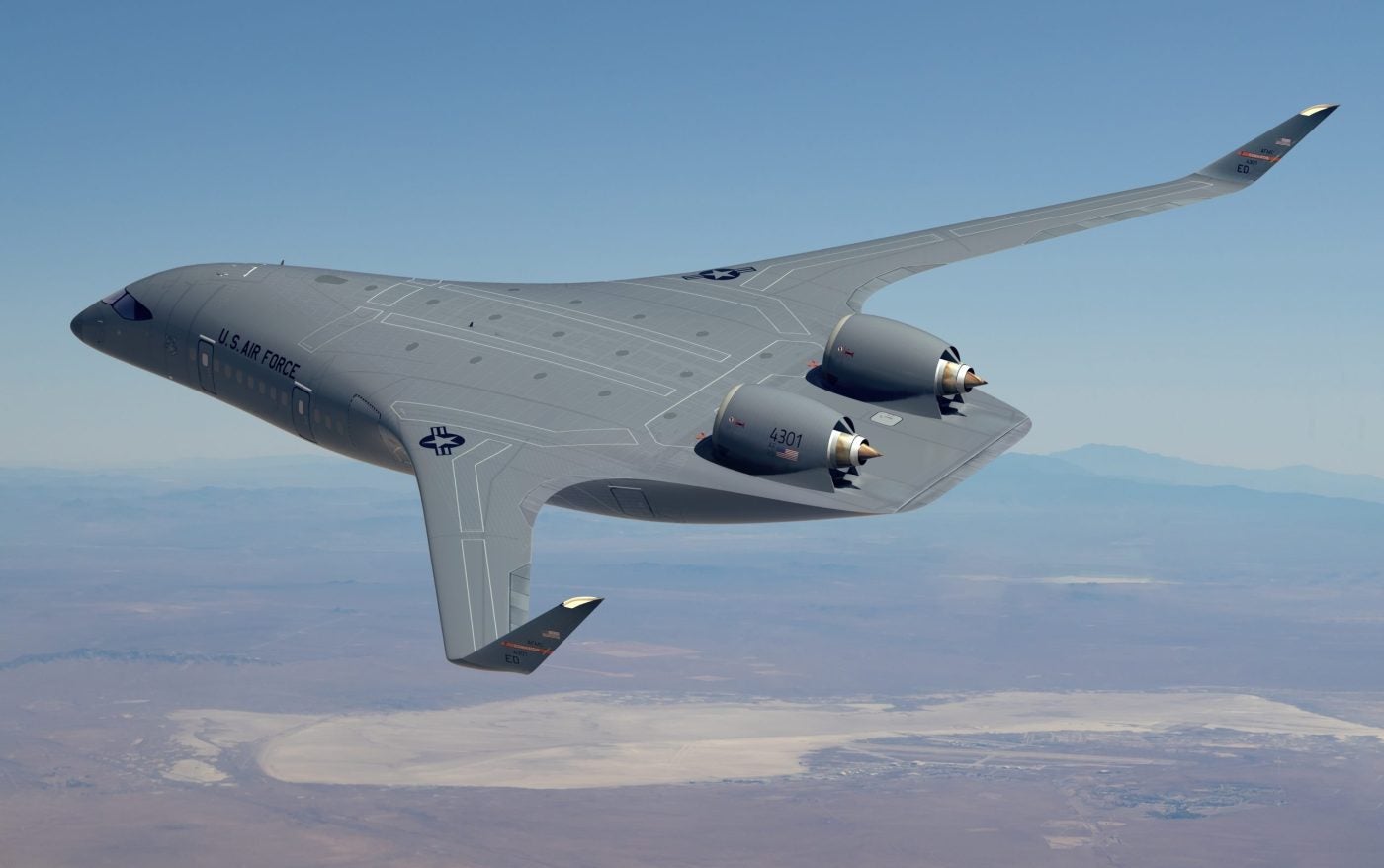
The Department of the Air Force has chosen JetZero for the next phase of a blended wing body (BWB) prototype aircraft project, marking a step towards advancing aviation technology.
This design integrates the aircraft’s body into its high-aspect-ratio wing, resulting in a 30% reduction in aerodynamic drag. The collaboration seeks to enhance BWB technology and usher in new possibilities for future air platforms, offering extended range, heightened efficiency, and increased payload delivery capabilities.
According to GlobalData’s ‘Analyst Briefing: Are we in for a blended wing revolution?’, the concept of a blended wing body aircraft has been around for a century but has so far only had limited use, with its primary application being high-altitude, long-range military reconnaissance and bomber aircraft, such as the SR-71 Blackbird, B-1 Lancer, and B-2 Spirit.
This move, backed by investments, sets the stage for a transformative evolution in airpower effectiveness, promising impacts on both military and commercial aviation sectors. The distinctive design of the BWB sets it apart from conventional tube-and-wing aircraft.
Secretary of the Air Force, Frank Kendall, underscores the profound impact of blended wing body aircraft, stating, “Blended wing body aircraft have the potential to significantly reduce fuel demand and increase global reach. Moving forces and cargo quickly, efficiently, and over long distances is a critical capability to enable national security strategy.”
The versatility of the BWB design offers a multitude of military transport configurations, collectively accounting for approximately 60% of the Air Force’s annual jet fuel consumption. Notably, this initiative is backed by the fiscal year 2023 National Defense Authorization Act, committing $235m over the next four years to this technology’s accelerated development.
Additional private investments are also expected, highlighting the collaborative efforts between the Department of the Air Force, the National Aeronautics and Space Administration (NASA), and the Defense Innovation Unit, with support from the DoD’s Office of Strategic Capital.
Dr Ravi Chaudhary, Assistant Secretary of the Air Force for Energy, Installations, and Environment, hails this achievement as a pivotal moment in Air Force history, paralleling the achievements of aircraft refuelling a century ago.
He emphasises, “This announcement marks another game-changing milestone for the Air Force in our efforts to maintain the advantage of airpower effectiveness against any future competitors.”
While the concept of blended-wing body aircraft has existed for decades, recent advancements in structural design, materials technology, and manufacturing have made large-scale production a tangible reality.
Anticipating rapid progress, the Air Force Operational Energy Office projects that initial flight testing could commence as early as 2027. As this visionary project unfolds, it promises to reshape the future of aviation and global mobility, enabling more efficient and sustainable air travel for both military and civilian applications.




